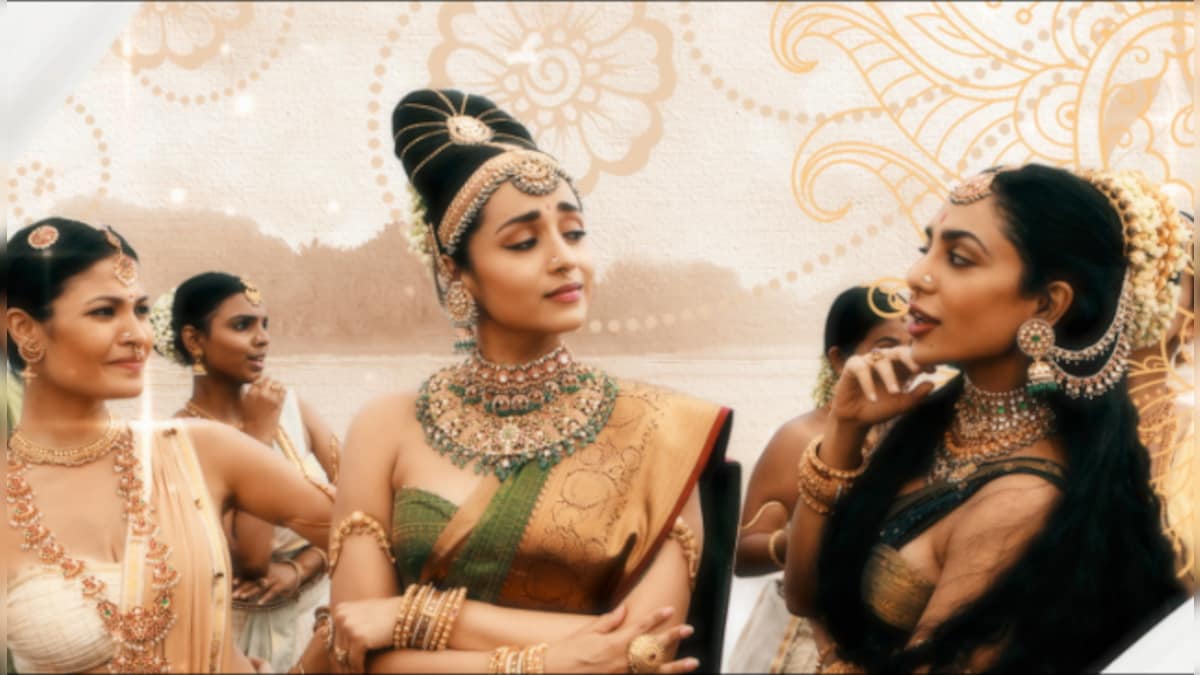Costume designer and stylist Eka Lakhani has been hearing about director Mani Ratnam’s plans to adapt Kalki Krishnamurthy’s cult classic Ponniyin Selvan for the silver screen for over a decade.
Lakhani who interned with the legendary director on Raavan in 2010 and worked as the main costume designer in Ratnam’s
Kadal
,
O Kadhal Kanmani
and
Kaatru Veliyidai
says, “We all knew this was Mani (sir’s) dream project, so the fact that I was associated with him on a project of such grandeur itself was an honour. I’ve been hearing whispers about him adapting the novel for the big screen for such a long time that it felt surreal when it actually happened.”
Ponniyin Selvan isn’t your normal period film. It is not mythology or a story about royalty, but it’s a fictional version of events set in the tenth century. The designer had a team of over eighty people working on the costumes for over a year and the number went up to a hundred for some scenes which involved battlefields or elaborate dance sequences.
Lakhani also had to dig deep and understand the enormity of the task ahead of her, for which she prepared well. From understanding the milieu the story was set in, to researching the time frame, she went ahead methodically to ensure that the costumes became an extension of the narrative.
Researching and Relearning
Lakhani was halfway through the novel when the script reached her and she got into action without much ado. “I did a recce to Tanjore which really helped me get the fundamentals right. Madras Talkies provided me with a researcher and we sought out to understand the time in which the story was set. We found inspiration in Tanjore in varied forms: we saw how stylized the drapes were on statues and even the staircases had ornate borders which we recreated on the pallus of the costumes.” she reminiscences.
The statues found in Tanjore also helped the designer to visualize the look of the costumes. Lakhani chanced upon a sculpture which was an amalgamation of horse and elephant which depicted strength, and which inspired her to find animal motifs to depict aggression. She had in-depth discussions with other creative minds working on the movie: Pratiksha Prashant (of Kishandas &Co, which provided the jewellery), Thota Tharani (the art director) and Ravi Verman (the cinematographer) to set the tone of the colour palette and grandeur.
Lakhani also worked with historians and bounced off the final look of them to iron out inconsistencies. Be it the draping of a turban or the yardage, the idea was that the audiences could relate to the language of the costumes. She adds, “Artist Maniam who illustrated the drawings in the original novel by Kalki really helped us. He gave an arc to every character and even designed chariots and courts, so we had a lot of reference material from there.”
Also crucial was to outfit the characters for the many battle scenes. Lakhani used multiple sources including The Renaissance Story from Delhi who deal with bespoke leather products as well as individual leather makers from Meerut and Dharavi (in Mumbai) to get authentic armoury done.
Creating a distinct look
The focus of the costumes was to look real and hence the fabrics stayed true to the south. Apart from Muls (also called Mulmul, which is pure cotton), the rich basket of silk weaves from the region especially the Kanjeevarams were used to depict opulence, grandeur and royalty. The embroidery was minimal but pure silks and natural dyes were preferred.
Lakhani laughs as she recalls the trials and travails involved in achieving authentic looks. “We tried to dye the costumes in natural colors. So, we tried everything from haldi, Kumkum, kesar and fruit peels but while the color was achieved, we couldn’t achieve the richness so we opted for natural colors.” The attempts didn’t go in vain though and those clothes were used for the character of Nambi (played by actor Jayaram) in the movie.
Traditional motifs, from animals, flowers to time-honoured designs from the south Indian lexicon, from mangoes to the rudraksha and trees were used on the costumes. Also, the garments (especially for the women) were classic: pleated blouses without straps, draped dhotis or skirts and then a sculpted drape over these two pieces completed the look.
Different characters were given different colours to denote their roles. Lakhani explains, “
Trisha Krishnan
plays an authoritative princess who is used to power since birth. To denote her power, we gave her clean cuts and sharp lines with her hair in a bun at ninety degrees. She is swathed in rich hues of golds and yellows.
Aishwarya Rai
’s character is seeped into acquired grandeur and there is a mystery around her, so she wears a lot of black, burgundy and royal tones. Even her drapes are tight, always in control.”
The same extensive detailing went into other characters:
Vikram
, who is ambitious and aggressive, wears a lot of blue and black to denote his fierceness and is always ready with armour while
Jayam Ravi
, who is a prince is given softer hues in keeping with his character.
While the challenges for the designer were many including ensuring that the actors could dance freely in heavy costumes as well as outfitting hundreds of characters in elaborate scenes, she remains enthused about her work. “This is Mani (sir’s) most ambitious project till date and I’m just cuffed to be a part of it.” she beams.
Read all the
Latest News
,
Trending News
,
Cricket News
,
Bollywood News
,
India News
and
Entertainment News
here. Follow us on
Facebook
,
Twitter
and
Instagram
.

